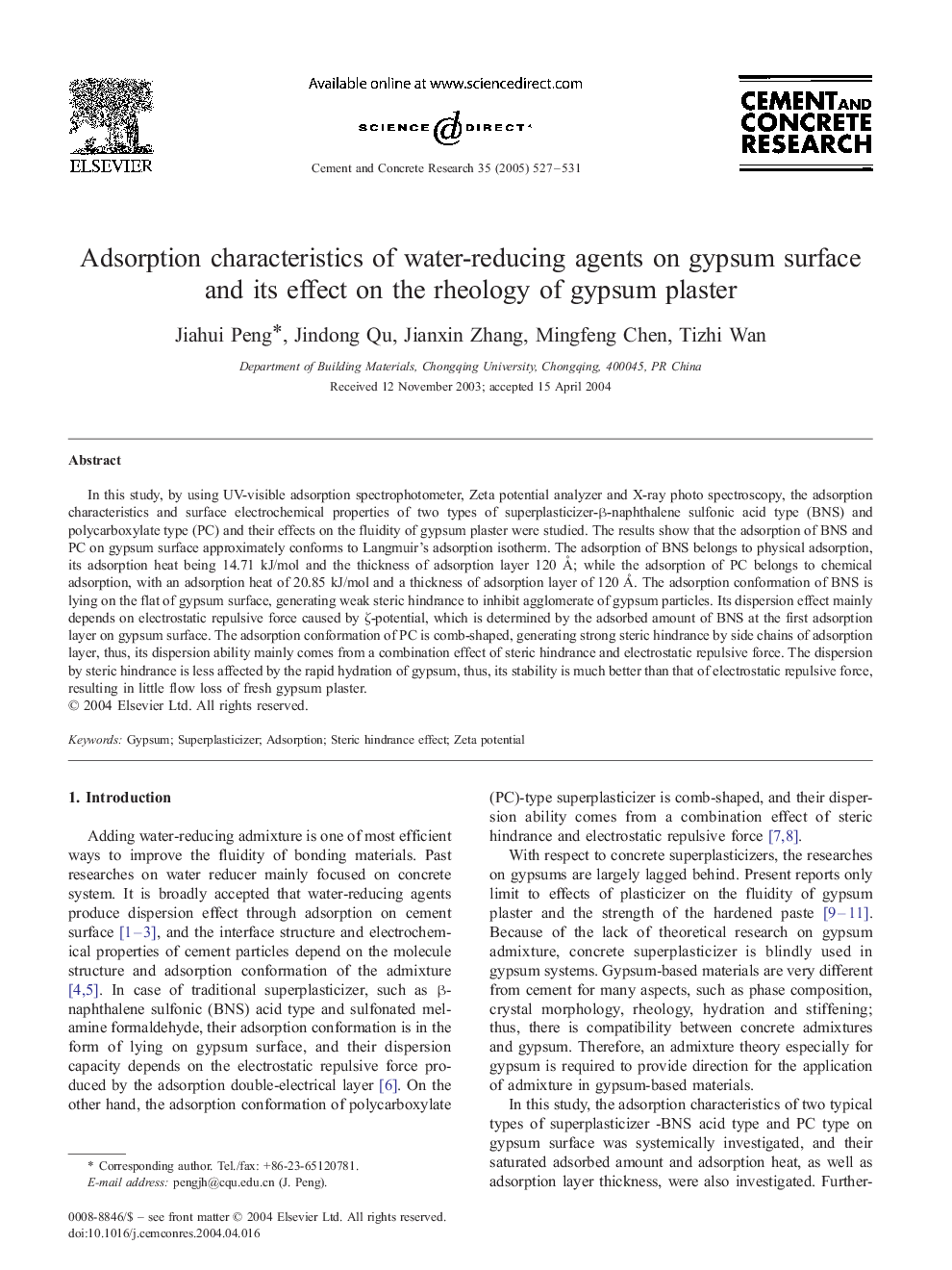| Article ID | Journal | Published Year | Pages | File Type |
|---|---|---|---|---|
| 10622540 | Cement and Concrete Research | 2005 | 5 Pages |
Abstract
In this study, by using UV-visible adsorption spectrophotometer, Zeta potential analyzer and X-ray photo spectroscopy, the adsorption characteristics and surface electrochemical properties of two types of superplasticizer-β-naphthalene sulfonic acid type (BNS) and polycarboxylate type (PC) and their effects on the fluidity of gypsum plaster were studied. The results show that the adsorption of BNS and PC on gypsum surface approximately conforms to Langmuir's adsorption isotherm. The adsorption of BNS belongs to physical adsorption, its adsorption heat being 14.71 kJ/mol and the thickness of adsorption layer 120 Ã
; while the adsorption of PC belongs to chemical adsorption, with an adsorption heat of 20.85 kJ/mol and a thickness of adsorption layer of 120 Ã
. The adsorption conformation of BNS is lying on the flat of gypsum surface, generating weak steric hindrance to inhibit agglomerate of gypsum particles. Its dispersion effect mainly depends on electrostatic repulsive force caused by ζ-potential, which is determined by the adsorbed amount of BNS at the first adsorption layer on gypsum surface. The adsorption conformation of PC is comb-shaped, generating strong steric hindrance by side chains of adsorption layer, thus, its dispersion ability mainly comes from a combination effect of steric hindrance and electrostatic repulsive force. The dispersion by steric hindrance is less affected by the rapid hydration of gypsum, thus, its stability is much better than that of electrostatic repulsive force, resulting in little flow loss of fresh gypsum plaster.
Related Topics
Physical Sciences and Engineering
Engineering
Industrial and Manufacturing Engineering
Authors
Jiahui Peng, Jindong Qu, Jianxin Zhang, Mingfeng Chen, Tizhi Wan,
